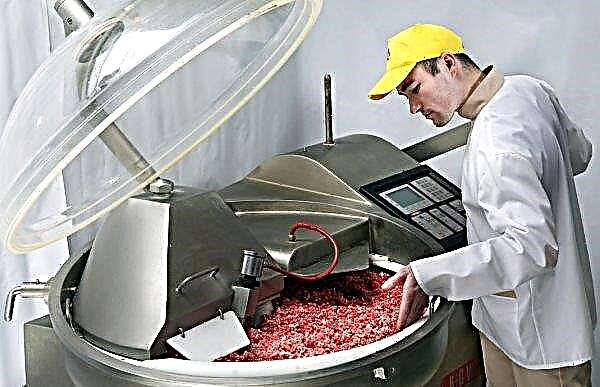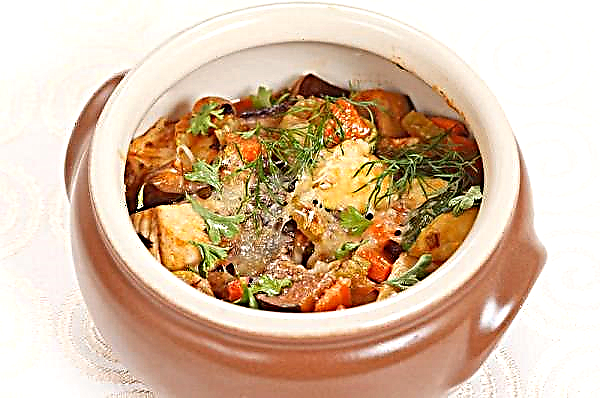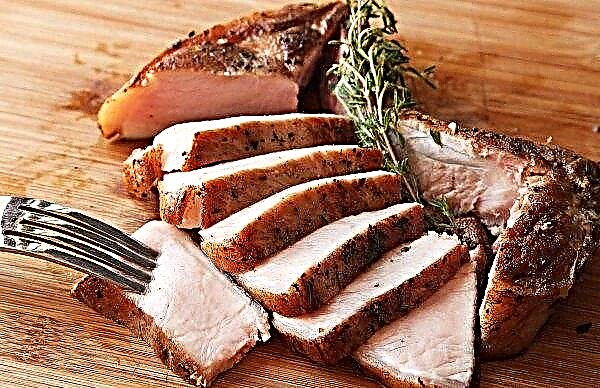Those who adhere to proper nutrition, of course, know the fact that greens are healthy and should be included in the diet. However, few people know exactly what benefits it brings. The article will discuss the benefits and harms of parsley for the female body.
Calorie content and chemical composition of parsley
Useful and harmful properties of parsley are due to its chemical composition and calorie content. In 100 g of greens there is a daily norm for the human body of vitamin A, beta-carotene, vitamin C and K, as well as a large amount of vitamins B9, E, PP.
Did you know? In ancient Rome, parsley was added to the food that the gladiators fed before going to battle. In those days, it was believed that the plant was able to increase their strength and make fearless.
Of the minerals, the plant is rich in potassium, calcium, silicon, magnesium, phosphorus, chlorine, iron, cobalt, copper, manganese, molybdenum, chromium, zinc. The energy value of 100 g of greens is 49 kcal.
The energy value of 100 g of greens is 49 kcal.
It includes:
- 3.7 g of protein;
- 0.4 g of fat;
- 7.6 g of carbohydrates;
- 2.1 g of dietary fiber;
- 85 g of water.
What is useful and harmful parsley for women
- With regular use, greens can have the following effects on the female body:
- metabolic acceleration;
- normalization of the adrenal gland and thyroid gland;
- removal of inflammation;
- vascular strengthening;
- improvement of oxygen metabolism;
- the establishment of the genitourinary system;
- improvement of the digestive tract;
- body toning;
- mood boost;
- return of visual acuity;
- normalization of the menstrual cycle;
- relief of symptoms of premenstrual syndrome;
- improvement during menopause;
- skin whitening;
- improving the condition of the skin;
- promoting weight loss;
- increase in milk during lactation.
Important! Only 10 g of parsley (about 1 tbsp. In crushed form) are able to provide a person with a daily norm of vitamin K.
Parsley can cause harm with excessive eating - headaches, muscle cramps, nausea, nervous system agitation appear.
Medicinal properties of parsley and possible contraindications
There are periods in the life of women - pregnancy and lactation - when they need to carefully monitor their diet so as not to harm not only themselves but also the baby. You also need to consider the features of eating greens during weight loss or in the presence of diseases.
During pregnancy
As for whether parsley can be used by pregnant women, there is no definite answer. Most often there is information that it is included in the list of herbs that are contraindicated during pregnancy. The substances that make up its composition can cause uterine tone and lead to miscarriage.
However, there is an opinion that the plant can have such an effect only with excessive use (for example, in a bundle per day), or when drinking juice. If you periodically eat 10 g as a seasoning for a dish, then there can be no negative consequences.
In addition, there are recommendations that parsley decoction can be drunk with such a frequent problem in pregnant women as edema. And yet, for those who bear a child, it is better to abandon the herb or use it in small doses out of caution.
Important! Pregnant women should not resort to the healing properties of parsley without the permission of a gynecologist. This can harm the fetus and jeopardize the normal course of pregnancy.
An absolute contraindication to the use of greenery is the presence in a woman carrying a child of urolithiasis, jade, allergies.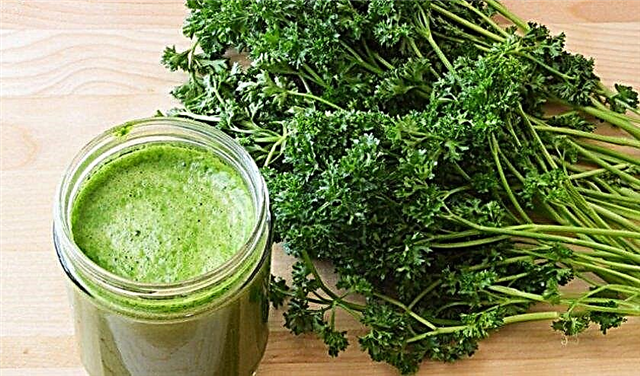
When breastfeeding
Women who are breastfeeding can use parsley without fear, but in acceptable quantities and only after the child is 3 months old.
This greens:
- replenish the body of the newly minted mother with the necessary vitamins and minerals;
- will improve the work of the kidneys and liver, the absorption of calcium;
- stabilizes the nervous system;
- improves the condition of hair, skin and nails;
- will increase the amount of milk.
Parsley should be introduced into the diet gradually, starting with a small amount and after heat treatment. The allowed daily dose in the absence of negative reactions from the baby's body is 50 g of greenery.
Important! If, after eating parsley, the baby has colic or skin rashes, the grass should be immediately removed from the diet. You can return to its introduction after a few months.
To improve lactation, a decoction of yarrow, dill seeds, dried nettle and dry parsley is used. Each herb is taken in 2 tbsp. l., then from the mixture stands out 2 tbsp. and pour a glass of boiling water. The broth is boiled over low heat for 30 minutes. Then it is diluted with boiled water to a full glass.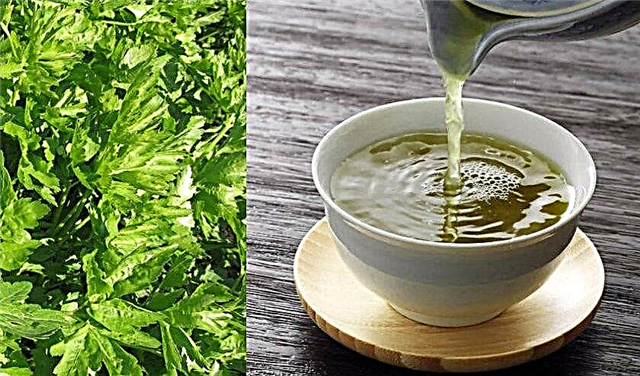
When losing weight
Parsley helps to get rid of extra pounds. This is due to the fact that the elements it contains help to cleanse the body, remove toxins and excess fluid, speed up metabolism, break down fats, improve the digestive tract, and suppress appetite.
To cope with excess weight helps both regular eating fresh grass, and the use of decoctions, infusions and tea from it.
The infusion is prepared from seeds. Half a teaspoon of raw materials is poured with a glass of boiling water and cooled with the lid closed. Drink 100 ml 2 times a day. The broth is done as follows: 2 tbsp. chopped fresh herbs pour 0.5 liters of boiling water and cook over low heat for 15 minutes. After cooling and filtering, it is drunk 1 glass three times a day. The course is 3 days. Then you need to take a break.
The broth is done as follows: 2 tbsp. chopped fresh herbs pour 0.5 liters of boiling water and cook over low heat for 15 minutes. After cooling and filtering, it is drunk 1 glass three times a day. The course is 3 days. Then you need to take a break.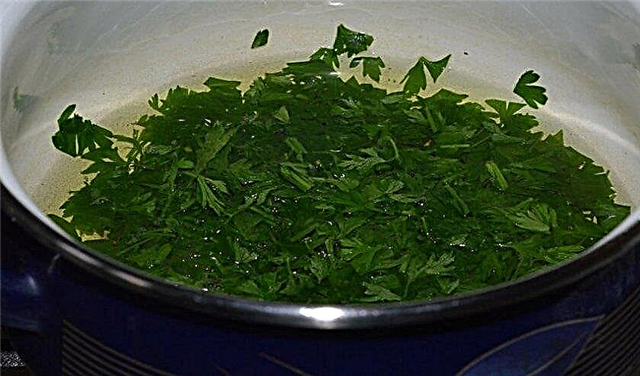 For making tea You can take 1 tbsp. chopped herbs, pour 300 ml of boiling water, add 1 tbsp. lemon juice. Brew tea for 10 minutes. After cooling to + 40 ° C, 1 part of honey can be added if desired. You need to drink tea 3 times a day before meals.
For making tea You can take 1 tbsp. chopped herbs, pour 300 ml of boiling water, add 1 tbsp. lemon juice. Brew tea for 10 minutes. After cooling to + 40 ° C, 1 part of honey can be added if desired. You need to drink tea 3 times a day before meals. Parsley can be added to fermented milk products or mixed with other herbs and vegetables known for their fat-burning properties - for example, celery.
Parsley can be added to fermented milk products or mixed with other herbs and vegetables known for their fat-burning properties - for example, celery.
For diseases
Grass is used to treat various disorders in the body. From edema. 150 g chopped greens put in a pan with 0.5 l of milk, close the lid, put in the oven. Take out when milk is reduced by half. Drink 1 tbsp. at intervals of 1 hour for 7 days.
From edema. 150 g chopped greens put in a pan with 0.5 l of milk, close the lid, put in the oven. Take out when milk is reduced by half. Drink 1 tbsp. at intervals of 1 hour for 7 days.
With flatulence. Pour 0.5 teaspoon seeds into 400 ml of chilled boiled water. Insist 2-3 hours. Drink 30 minutes before meals for 1 tbsp. 3-4 times a day.
With cystitis. 1 teaspoon of seeds placed in 1 liter of chilled boiled water. Leave overnight. Drink 3 tbsp. every 3-4 hours.
With violations of the menstrual cycle. 0.5 hours of leaves and roots placed in 400 ml of chilled boiled water. Leave on for 8 hours. Drink 2 tbsp. at intervals of 2 hours.
With visual impairment. Drink parsley juice mixed with carrot juice in a ratio of 1 to 3.
With obesity. Combine parsley, dandelion root, fennel fruits, mint leaves (all 1 tbsp) and 3 tbsp. buckthorn bark. 2 tbsp. mix the mixture in 500 ml of boiling water. Leave for half an hour. After straining, drink in the morning.
This plant is contraindicated for women who fall into the following categories:
- sick with urolithiasis, jade;
- have inflammation of the bladder;
- are allergic.
Did you know? The name of the plant in question did not come from the name of the comedic character of the national puppet theater, but from the ancient Greek word “petros” (stone), since in nature parsley grows well on rocky soil.
Scope of parsley
Valuable properties of the plant have found application in cosmetology, medical and culinary recipes.
In cosmetology
Cosmetic products are used for the following purposes:
- removal of irritation;
- elimination of swelling of the eyelids;
- getting rid of acne;
- drying the skin;
- face refreshment;
- getting rid of oily sheen;
- lightening age spots and freckles;
- hydration;
- giving shine to hair;
- getting rid of dandruff;
- wound healing;
- removal of inflammation;
- getting rid of small wrinkles;
- hair strengthening.
 Greens are mixed in masks, lotions, rinses, a solution for compresses.
Greens are mixed in masks, lotions, rinses, a solution for compresses.In medicine
Traditional healers have developed a number of tools (decoctions, infusions, lotions, juice) with parsley in the composition, which help solve the following problems:
- remove the accumulated fluid and eliminate edema in case of impaired cardiac activity and kidney function;
- eliminate the decreased secretory function of the stomach;
- heal wounds;
- improve appetite;
- relieve the condition with cystitis and urethritis;
- establish a menstrual cycle;
- relieve pain during menstruation;
- eliminate bad breath;
- relieve inflammation of the oral mucosa.

In cooking
Parsley has a spicy aroma and sweet, with notes of astringency, taste. In cooking, these features are used in order to give the original taste and smell to dishes: salads, meat (except for beef and pork), fish, cereals, scrambled eggs, first courses, boiled and fried potatoes. Greens are put in preservation, pickles.
Important! So that greens do not lose valuable elements after heat treatment, they should be put in a dish 1-2 minutes before ready, or after removal from the stove.
In addition to fresh, parsley is also used dried and frozen.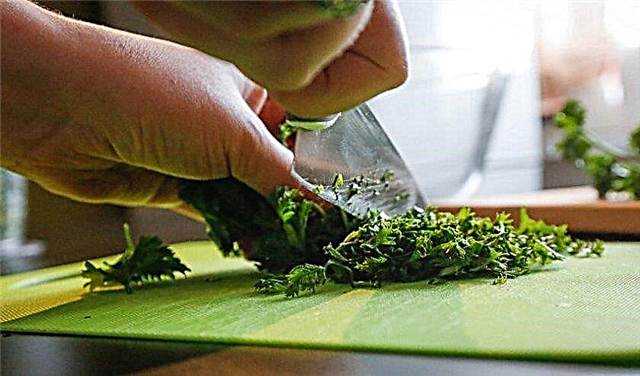
Features of storing fresh parsley
Greens can be kept fresh in the refrigerator from 3 days to 2 months.
There are several ways to store it:
Method 1 Put in a jar of water and cover with a bag on top. With a daily water change, greens can last 3-4 days.
Method 2 Take a well-washed and thoroughly dried 1 l jar. Put greens in it, roots up. Close with a plastic cover. Shelf life - up to three weeks.
Method 3 Put grass in a plastic bag and do not close it. On the bottom shelf of the refrigerator, the product will remain fresh and usable for two weeks.
The longest - 1 year - fresh herbs are stored frozen in the freezer.
So, parsley is a spicy herb with a unique chemical composition and a number of beneficial effects on the female body. It is used not only to improve the taste of various dishes, but also to solve many cosmetic problems and treat diseases.

